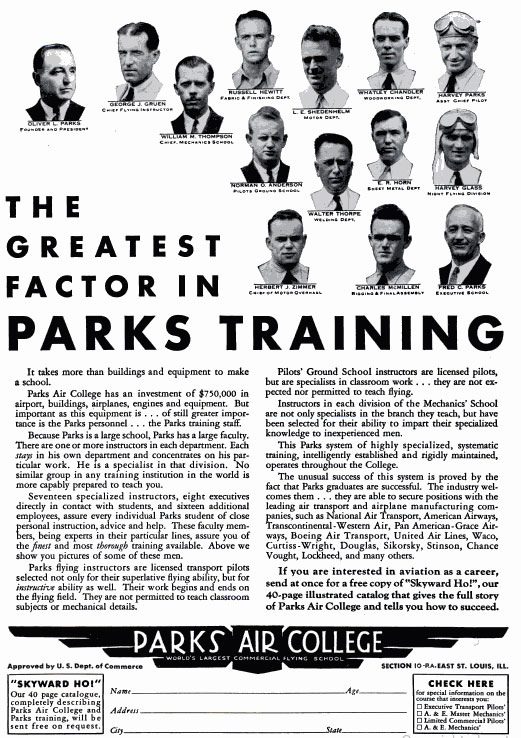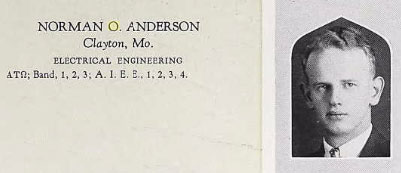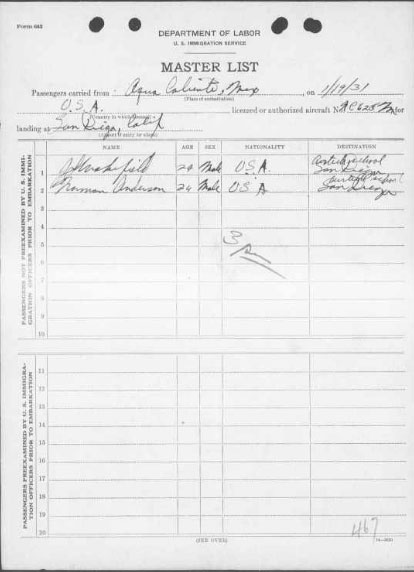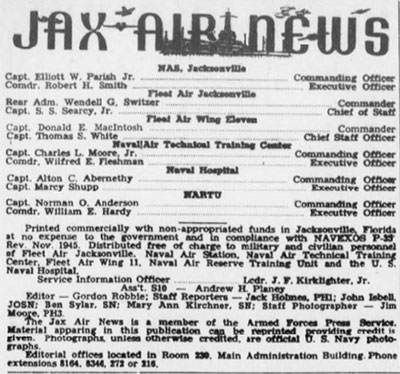THANK YOU!
YOUR PURCHASE OF THESE BOOKS SUPPORTS THE WEB SITES THAT BRING TO YOU THE HISTORY BEHIND OLD AIRFIELD REGISTERS
Your copy of the Davis-Monthan Airfield Register 1925-1936 with all the pilots' signatures and helpful cross-references to pilots and their aircraft is available at the link. 375 pages with black & white photographs and extensive tables
---o0o---
The Congress of Ghosts (available as eBook) is an anniversary celebration for 2010. It is an historical biography, that celebrates the 5th year online of www.dmairfield.org and the 10th year of effort on the project dedicated to analyze and exhibit the history embodied in the Register of the Davis-Monthan Airfield, Tucson, AZ. This book includes over thirty people, aircraft and events that swirled through Tucson between 1925 and 1936. It includes across 277 pages previously unpublished photographs and texts, and facsimiles of personal letters, diaries and military orders. Order your copy at the link.
---o0o---
Military Aircraft of the Davis Monthan Register 1925-1936 is available at the link. This book describes and illustrates with black & white photographs the majority of military aircraft that landed at the Davis-Monthan Airfield between 1925 and 1936. The book includes biographies of some of the pilots who flew the aircraft to Tucson as well as extensive listings of all the pilots and airplanes. Use this FORM to order a copy signed by the author, while supplies last.
---o0o---
Art Goebel's Own Story by Art Goebel (edited by G.W. Hyatt) is written in language that expands for us his life as a Golden Age aviation entrepreneur, who used his aviation exploits to build a business around his passion. Available as a free download at the link.
---o0o---
Winners' Viewpoints: The Great 1927 Trans-Pacific Dole Race (available as eBook) is available at the link. This book describes and illustrates with black & white photographs the majority of military aircraft that landed at the Davis-Monthan Airfield between 1925 and 1936. The book includes biographies of some of the pilots who flew the aircraft to Tucson as well as extensive listings of all the pilots and airplanes. Use this FORM to order a copy signed by the author, while supplies last.
---o0o---
Clover Field: The first Century of Aviation in the Golden State (available in paperback) With the 100th anniversary in 2017 of the use of Clover Field as a place to land aircraft in Santa Monica, this book celebrates that use by exploring some of the people and aircraft that made the airport great. 281 pages, black & white photographs.
---o0o---
Thanks to site visitor E.M. for help researching this page.
---o0o---
Anderson has a biographical page at the Naval History and Heritage Command, Modern Biographical Files in the Navy Department Library. Unfortunately, his file is not online.
---o0o---
YOU CAN HELP
I'm looking for information and photographs of pilot Anderson to include on this page. If you have some you'd like to share, please click this FORM to contact me.
---o0o---
SPONSORED LINKS
HELP KEEP THESE WEB SITES ONLINE
FOR YOUR CONVENIENCE
You may NOW donate via PAYPAL by clicking the "Donate" icon below and using your credit card. You may use your card or your PAYPAL account. You are not required to have a PAYPAL account to donate.
When your donation clears the PAYPAL system, a certified receipt from Delta Mike Airfield, Inc. will be emailed to you for your tax purposes.
---o0o---
NORMAN OLIVER ANDERSON
Norman Anderson signed once in the Parks Airport Register, Tuesday, April 21, 1931 at 11:15AM. This is at once curious and unsurprising, because Anderson was an employee of Parks Air College. The advertisement, below, from Popular Aviation (PA), October, 1933, pictures him as part of the aviation staff at the College. His photo caption says he taught the "Pilot's Ground School."
 |
Note, at upper right in the advertisement, Davis-Monthan Airfield Register pilot Harvey Parks was pictured.
Norman Anderson was born August 23, 1907 in Minnesota. His father was Godfery Galvan A. Anderson and his mother was Lydia H. The 1910 U.S. Census, Anderson's first, placed him living with his father (age 33) and mother (31) in St. Paul, MN. His younger sister, Marcella, was just 10 months old. Also living with them was Mary Johnston (47), a housekeeper, and Hulda Johnston (31) a seamstress. Anderson's parents, as well as the Johnstons, were all born in Sweden. His father and mother came to the United States in 1890 and 1899, respectively. His father was a naturalized U.S. citizen. I could find no marriage record for them. His father's occupation was listed as a "Buyer" for an "Importer."
The 1920 Census placed the family in St. Louis, MO, where Godfrey was now the "General Manager" of a "Department Store." Norman (12) was now accompanied by sister Marcella (10), and sisters Arline (8) and Lois (5).
The 1930 Census found the family still together in St. Louis. Godfrey, now 54 years old, was "Manager" of a "Dry Goods Store." Norman, at age 22, was listed as an "instructor" at an "Airport," probably either Lambert Field or right here at Parks Airport. They lived at 59 Fair Avenue, St. Louis, in a home valued at $45,000. On Google Earth today, the place still stands as a multi-storey, Tudor-façade home in a tree-lined and landscaped neighborhood of other stately homes. Mathilda Fuszner (23) was now the family servant.
 |
Anderson was probably just finishing his education as the time of the 1930 Census. He was educated at Washington University in St. Louis, MO. His college yearbook photograph is at left. He joined Alpha Tau Omega fraternity, and was a member of the university band for three years, and of the AIEE (American Institute of Electrical Engineers) for four years. Later, he earned a separate degree in aeronautical engineering at Parks College. This preparation served him well in his teaching and military career that would follow.
 |
I don't know where or when he learned to fly, but a few months before his Parks Airport visit, Anderson was logged by the U.S. Immigration Service crossing the southwest border of the U.S. on January 19, 1931. The Immigration form is at right.
Anderson was flying with Davis-Monthan Airfield Register pilot John S. Wakefield. It is not known from the Immigration Service form whether Wakefield or Anderson was the pilot-in-command of the airplane that day, and who was the passenger. Regardless, the Fleet Model 1 NC625M (S/N 201), was flown by them. NC625M showed up ten times in four different Registers (Clover Field, Grand Central Air Terminal, Davis-Monthan Airfield and Oxnard Field, Albuquerque, NM) during 1930-31. It was a solid western airplane.
Anderson and Wakefield were flying from Agua Caliente, Mexico to San Diego, CA. This was a common itinerary for many west coast pilots and passengers, especially before the 21st Amendment (that Amendment terminated Prohibition in the U.S) was signed into law in December, 1933.
Before then, Americans used to fly over the border into Mexico so they could enjoy a wet weekend. January 19, 1931 was a Monday, so we can guess both Anderson and Wakefield, in their 20s, enjoyed their weekend and were on their way back home.
If you read the advertisement at the top of this page, it is clear that Anderson was, "...not expected nor permitted to teach flying." Rather, he was a ground school instructor. Thus, his landing at Parks was probably a private flight and not one with students.
 |
Indeed, he flew an unidentified Curtiss Fledgeling to his landing at Parks in 1931, and cited Lambert Field, St. Louis, MO as his homebase and destination. He cited after his name, "Ensign USNR." The Fledgeling was a Navy trainer type during the 1930s, and he may have been fulfilling his reserve flying duties.
According to ancestry.com, Anderson posted at least three enlistment and release dates from the U.S. Navy. Curously, none of them include 1931. His first enlistment was May 1, 1937, and release September 12, 1937. The second enlistment was June 16, 1939 and release September 4, 1939. These two bouts of service appear to be summer time reserve appointments. His final enlistment was on August 26, 1940 with release on April 30, 1959. This appeared to be a choice by Anderson to finish out his career as full-time military. He moved through the ranks of Lieutenant Commander, Commander and Captain during this period. Clearly, his navy career began before May 1, 1937, but I found no record of it.
Anderson would return to Lambert Field during the 1940s and 50s, first as a routine assignment, and then as the commander of the naval station there during the 1950s (see his obituary, below).
His teaching experience followed him. He did author a Pilots' Airplane Manual for the Civil Aeronautics Administration (CAA) that was published as the Civil Aeronautics Bulletin No. 27 in September, 1940. The cover of that book is above, left.
The book was used to familiarize students with the structure, maintenance, and rigging of aircraft, and it was designed to serve as a textbook in the commercial ground school course of the Civilian Pilot Training Program (CPT). The CPT was instituted by the government late in the 1930s to prepare pilots for the war that officials knew was coming.These vintage books are still available, used, online for $5-15.
The 1940 Census placed Anderson (age 32) living at 8116 Monroe St., St. Louis, MO with his wife, Marie (27), and daughters Christina (1) and Judith (2 months). Velva Sewing (19) lived with them as their housekeeper. Their address today is a modest sized house, which looks to be 1940s vintage. They owned this home, which was valued at $6,000 that year. His occupation was listed as "Teacher" at a "Vocational School." The school would be Parks Air College where he taught ground school in 1933. He was well-paid, with his salary listed as $4,000. I could find no marriage records for the Andersons.
 |
 |
Shortly after the Census, in 1941, he and Marie were moved to Jacksonville, FL. The city directory for Jacksonville placed them living at 2825 Yale Avenue. That address today hosts a home that looks like recent construction.
The 1945 Florida state Census placed the family living in Atlantic Beach, FL.This town is east of Jacksonville on the Atlantic Ocean.
After the 1945 Florida Census, I know little about Anderson's personal or military life. If you can help fill in the blanks, please let me KNOW. His obituary, below, states that he participated during WWII as a naval aviator, working as a consultant with aviation companies.
In 1958, at 51 years old, Anderson was still in the navy reserves as a captain commanding NARTU (Naval Air Reserve Training Unit) at the Naval Air Station in Jacksonville, FL. At right is the banner head for the JAX Air News (Florida) of April 10, 1958 that lists Anderson as Commanding Officer of NARTU (look about halfway down the banner). The military service coverage of the JAX Air News is listed in the fine print.
Part of Anderson's job as Commanding Officer was personnel morale and outreach to the greater Jacksonville community. Another article in the same JAX Air News gave a sense of these duties, left.
Anderson flew West on January 20, 1991. His obituary, from the St. Louis Post-Dispatch (MO) for January 30, 1991, is below. He chose to live in the Jacksonville area after his retirement in about 1976. His obituary states that he had another daughter, Virginia. Marie is not mentioned in the obituary. I could find no birth or death information for her.
"Capt. Norman O. Anderson, former Naval Reserve commander at Lambert Field and instructor at Parks College in Cahokia, died Sunday (Jan. 20, 1991) of cancer at his home in High Springs, Fla. He was 83. Capt. Anderson, a retired captain in the Navy Reserve, was stationed at the Naval command station at Lambert in the 1940s and was commander of the station in the early 1950s. He earned an electrical engineering degree at Washington University and an aeronautical engineering degree at Parks College in Cahokia, where he later taught. Before entering World War II as a Navy aviator, he worked as a consultant at several aviation companies throughout the country Including McDonnell Douglas Corp. here. "N.O. Anderson Headed Lambert Reserves during the war, in addition to his work in the St Louis area. Capt. Anderson held positions at the Department of Defense in Washington and at naval bases throughout the nation. He retired about 15 years ago and moved to Jacksonville, Fla. A funeral service was held on Jan. 24 in Jacksonville, Fla., with burial at Evergreen Cemetery in Jacksonville. Among the survivors are three daughters, Christina Shiver of High Springs, Fla., Judith Eckard of Potomac, Md. and Virginia Merriman of London; two sisters, Marcella Snider of Mount Vernon, Ill., and Patricia Kincaid of Madison, Wis., and eight grandchildren...." |
---o0o---
SPONSORED LINKS
THIS PAGE UPLOADED: 09/07/14 REVISED: 08/19/16
